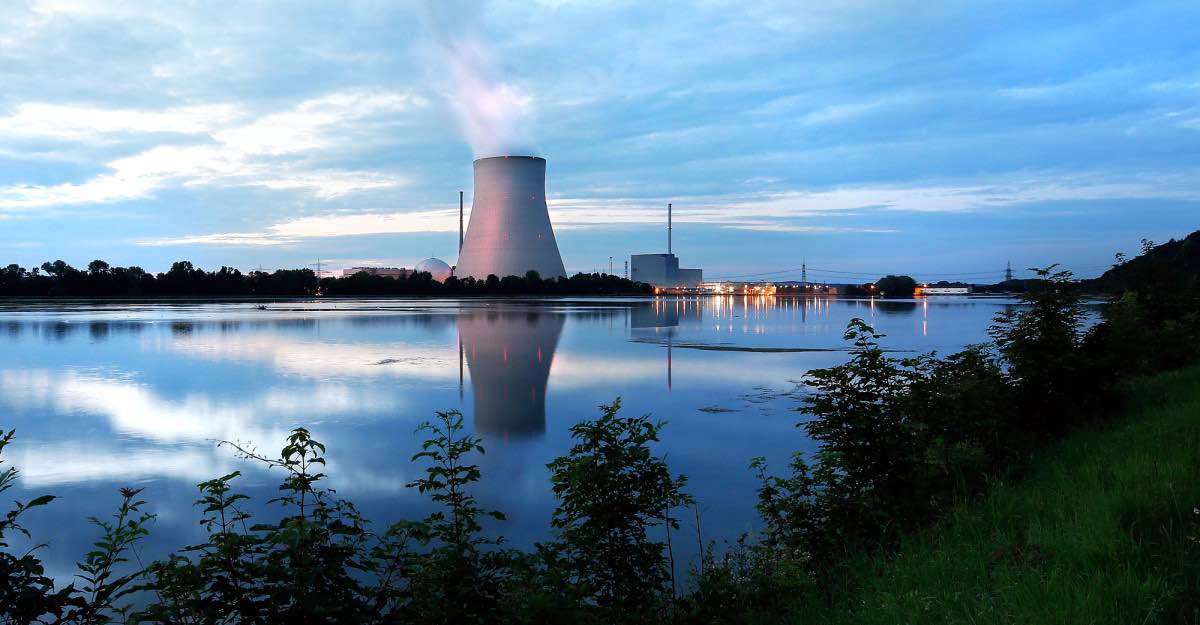Two of Germany’s three remaining nuclear plants should not go fully offline as planned at the end of this year but instead will remain in an emergency reserve until mid-April 2023 to provide a backup for the power grid if needed, economy and climate minister Robert Habeck said in Berlin.
The Green Party minister presented the results of a grid “stress test” conducted over several weeks by Germany’s transmission grid operators, which found that keeping the two nuclear plants in the south of the country operational could help avoid grid bottlenecks in extreme situations during the upcoming winter.
The plants, Isar 2 in Bavaria and Neckarwestheim 2 in Baden-Wurttemberg, will be on standby for several months after the scheduled end date on 31 December to possibly “contribute in certain stress situations in the power grid”.
The Emsland plant, in northern Germany, will be decommissioned as planned. The proposal by Habeck’s ministry must now be debated by the government and by parliament, as legislative reforms are necessary.
The decision means that Germany will stick to the nuclear phase-out as regulated by law, said Habeck. New fuel elements would not be loaded, and the new reserve would be ended by mid-April 2023.
“Nuclear power is and will remain a high-risk technology and the highly radioactive waste will burden many generations to come,” said Habeck.
The stress test’s results had been awaited for weeks, as Europe’s energy crisis pushed gas and electricity prices to unprecedented levels and led to fears over household budgets and businesses collapsing due to unaffordable energy bills as well as possible gas rationing that could lead to lasting economic damage in entire industries.
While Habeck’s Green Party and chancellor Olaf Scholz’s Social Democrats (SPD) have insisted that delaying the nuclear power phase-out in a so-called “stretched operation” mode would only be an option for several months into the next year, finance minister Christian Lindner, of their coalition partner Free Democrats (FDP), had joined the conservative CDU/CSU opposition alliance in calling for a longer extension for several years.
This would include procuring new nuclear fuel rods and changing the country’s carefully balanced nuclear exit law.
The FDP and opposition parties point to a shift in attitude among German citizens, whose rejection of nuclear power has dropped in the wake of the energy crisis, but the SPD and the Greens have ruled out any longer extension.
Due to the technology’s risks, “a sweeping runtime extension is not justifiable, also with regard to the plant’s security standards,” Habeck argued.
Any changes to Germany’s existing nuclear exit law would therefore only entail a limited runtime extension until spring next year.
The minister said he does not expect plants to be turned off and on several times. If Germany decided to keep the plants online during the coming winter – a decision which could already be taken in December – then the plants would run continuously until April.
Following intensive monitoring of the power supply situation, the economy ministry would propose to give the plants a limited runtime extension. The grid agency would then recommend to get them out of the reserve. The final decision is then to be made via government decree with the possibility of objection by the parliament.
In an interview with public broadcaster ARD following his announcement, Habeck vehemently rejected concerns the decision to limit the runtime extension could jeopardise supply security.
“Germany’s energy supply is safe, we have enough energy and our grid is secure,” he said.
This article was originally published by Clean Energy Wire. Reproduced here under a “Creative Commons Attribution 4.0 International Licence (CC BY 4.0)” . Read the original version here.








